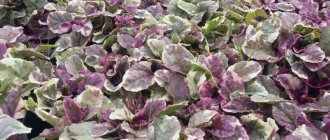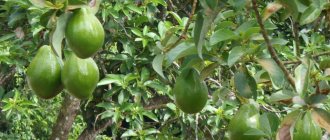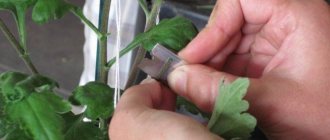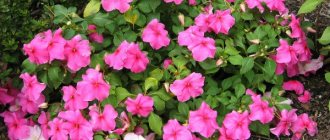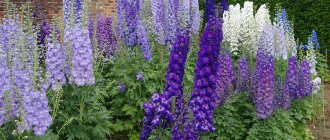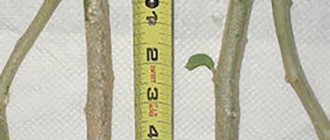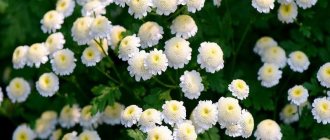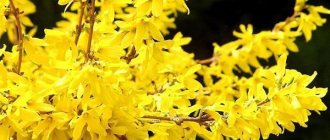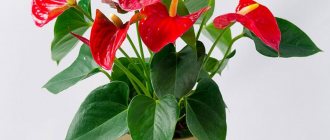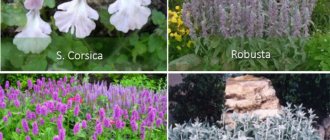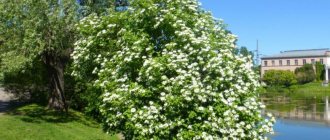Let's consider the most popular indoor flower among its species, Anthurium andreanum. White anthurium Andre, or anthurium andrianum red, takes first place in popularity, but this does not mean that other varieties are not worthy of attention. It has gained popularity and respect among other indoor plants due to its elegance and beauty of inflorescences. As soon as flower growers do not call it, translated from Greek it is a tail and a flower, you can find such names as wax flower, male happiness - it is believed that it brings happiness to the groom and prosperity in family life, flamingo flower. Anthurium - belongs to the Araceae family.
Description and types of Anthurium Andre
This family is widely represented by various plants, and they can also be distinguished into certain groups. This family can be roughly divided into three components: vines, tuberous and rhizomatous. Anthurium has taken the middle ground among this division. In fact, there are up to a thousand species of anthurium; many hybrids have been bred. In order to successfully grow anthurium at home, you should study its growing conditions. In other words, to understand how it grows and develops in its homeland if we tried to recreate these conditions. Let's figure it out. Anthurium and its colleagues from the Araceae family come from the hot tropics of Central and South America. This is an evergreen perennial plant with succulent and leathery foliage and extraordinary inflorescences, both in color and in leaf shape, inflorescence (it is also called a spathe), depending on the variety, the leaf can be of different shapes, the color of the inflorescence is also striking in its diversity, but I would like to note that in nature there is usually only red anthurium, but thanks to breeders, we can admire a wide palette. Anthurium is somewhat similar to orchids; it also produces aerial roots; this is the main feature of epiphytes, which, clinging to the bark of trees, try to gain a foothold and obtain moisture and nutrients. The leaf, depending on the variety, is almost always oval in shape (lanceolate), the surface is shiny, sometimes glossy, the color is from dark green to light green, elongated in shape and somewhat reminiscent of a heart. The leaf can be up to 30 centimeters long, almost 12 centimeters wide, and is located on a petiole that is perpendicular to it.
The main feature is the inflorescences - they consist of a spadix, on which flowers are formed, and then seeds, and the so-called spathe (this is the petal itself, located with the spadix and form the familiar inflorescences). The spadix is usually no more than 10 centimeters, but the spathe itself is a leaf, it is slightly wrinkled, has a glossy effect, and can also be heart-shaped or slightly elongated. When ripe (end of flowering), spherical fruits appear on the cob, which can be collected. Thanks to breeders, many varieties have been bred with different colors of inflorescences from classic white, red, to various shades of orange, pink, yellow, purple, brown and even black. You can find two-tone and even green colors. The cob also has color and shape, but is not as brightly represented as the color of the spathe. Depending on the species, anthurium may differ in both the flowering period and its duration; on average, a flower stays on the plant for up to four weeks, and abundant flowering can take up to 10 months; with good care, it can be maintained decoratively, and it will look impressive, about 3 -4 years, then your anthurium should be subjected to a rejuvenation procedure.
Please note that anthurium juice can irritate the mucous membranes and skin of the hands, so when working with it, follow the rules for working with low-toxic drugs, use rubber gloves and wash your hands and equipment well after work. Try to protect the plant from children and pets.
The most popular varieties of Anthurium, which have gained popularity among indoor floriculture. Each variety is similar in one way or another, there are differences in the shape of the cob, leaves and color of the inflorescences. The hardiest of the hybrids is Anthurium Andrianum Mix - quite hardy and very decorative in compositions. It is distinguished by long flowering, a special place is occupied by the varieties Black Prince and Black Queen - they change their shade to a more saturated one. Anthurium variety Andre Champion (Pink Champion) has a pink perianth, and a snow-white color (White Champion), over time the inflorescences begin to turn green. The Baby Boomer variety is used for cutting due to its high growth of up to one meter. Almost all varieties are used by florists to make bouquets. Here are more varieties of anthurium: Favorite, Silens, Leganza, Adrios Red, Otazu, Belize anthurium, Aramon - which you should pay attention to.
In order to care for a plant, you need to understand the requirements, and they are similar for all plants. Requirements include: watering, indoor air humidity, fertilizing, soil and pots for plants, lighting, the next point is knowledge about pests and diseases, how the plant reproduces. Let's take a closer look at these points.
Features of the plant
Anthurium Andre was brought to us from the tropical forests of Colombia and Ecuador; it is a representative of the Aronicaceae or Araceae representatives. Initially, this plant grew on the bark of trees and fed on aerial roots, but later adapted to life on earth. There are also species from the family growing on rocks. The ancient Greeks were the first to notice it; in the country it was called “wax flower” or “flamingo flower.”
Anthurium Andrianum will grow in length by an average of 10 cm; its distinctive feature is the presence of bracted inflorescences that grow like a blanket and cover the foliage. The inflorescences are heart-shaped, brightly colored. With proper care, the plant soon pleases its owners with the appearance of round orange fruits that protrude slightly from the cob.
How to care
- The soil. To plant indoor plants, you can use ready-made soil, which is purchased in specialized stores or garden centers. You can also mix the soil yourself, for this you need to take leaf, turf soil, humus, peat, sphagnum moss and sand (four parts leaf, two parts each turf, humus, peat and one part each moss and sand), you should also add to the mixture bone meal. When planting or compiling the soil, I always add perlite or vermiculite; this helps aerate the soil, loosens it and allows the root system to breathe. For anthuriums, the soil is also suitable for orchids.
- Landing. As for the container, the pot should not be deep; a container that is not tall with wide edges is ideal. Be sure to put expanded clay at the bottom of the pot, or you can use shards from broken pots. Good drainage is the key to plant health, especially since Anthurium Andre is very sensitive to stagnant moisture. A little higher than the base, you can make additional holes. Anthuriums love close growing conditions, so the pot should be slightly larger than the earthen ball of the plant itself. The top layer of soil can be covered with sphagnum moss. When planting a plant, carefully remove it from the shipping pot (the one in which you bought it), carefully with the roots - they are very fragile.
- Transfer. Each plant should be replanted as it fills the pot. If the pot becomes small, the plant should be replanted. Anthuriums at a young age are replanted annually; then, once the plant is more than five years old, it is enough to replant it once every three years. But there is a peculiarity: the maximum decorative life of a plant is 1-3 years, then it needs to be renewed, divided or cuttings. When replanting an anthurium, you need to analyze and inspect the roots; if dried or rotten roots are found, they should be removed/trimmed immediately. If you notice diseases of the root system, you should treat the plant with phytosporin and completely replace the soil. When replanting, try to plant the plant at the same level as it grew in the previous pot; do not plant the anthurium too deep, as this may cause the stem to rot. It is advisable to keep the newly purchased plant indoors for several days, during which time it will get used to your room and replanting will not be additional stress for the anthurium. It is enough to remove the plant and inspect the roots. The recommended time for adaptation is a couple of weeks, but usually in stores the plants are for sale and their care is minimal, so I usually replant after two or three days, sometimes immediately after purchase.
Where to put
— Lighting . Anthurium Andre prefers bright places with diffused light, it should be enough for the full development of the plant, direct sunlight will be harmful, so it will have to be shaded if you have a sunny room. The ideal place would be the western and eastern sides, and if you have a northern side and very little light, then special lamps for lighting plants (regular lamps or phyto lamps) will come to the rescue.
- Temperature . Having chosen a location, the next step is to understand the temperature conditions, drafts should be avoided, and plants should not be placed near heating. Both the first and second are destructive. The ideal temperature range in summer is 20-25 degrees, in winter not lower than 15 degrees, a minimum temperature of 12 degrees is allowed only during plant dormancy.
- Humidity . The plant is tropical - accordingly, the humidity must be appropriate; at home, you can increase the humidity by spraying the plant, you can put the pot in a container with expanded clay and water, this will give additional humidity, use air humidifiers.
Possible difficulties during cultivation
All problems when growing Andre's anthurium come down to violation of agrotechnical standards. Lack of flowering can be caused by insufficient lighting, poor nutrition, and wintering. Root rot and blackened leaf blades appear when the crop is systematically waterlogged.
Yellowed leaves may indicate watering with hard tap water, lack of light or nitrogen. Brown-yellow spots indicate hypothermia and malnutrition.
Dry edges of leaf blades are a sign of a fungal infection called anthrocnose. If measures are not taken in a timely manner, the plant will die.
Anthurium Andre is the most common form in indoor and greenhouse floriculture. The culture requires the creation of a supportive environment and the provision of basic care. In most cases it reproduces vegetatively. Blooms longer than all other varieties.
How to water
- Watering. Tropical plants love humidity and abundant watering. Anthurium Andre is no exception, but there are watering features that you need to know. Watering is good, but excess moisture will have a detrimental effect on the plant itself. We water very abundantly, the pot and plant should be saturated with moisture, excess moisture should be removed from the tray. In cool rooms we water less often, only after the top lump has dried out a little, but drying out should be avoided. Water for irrigation should be slightly above room temperature, allowed to sit for several days. Usually I fill the container and place it closer to the battery. The optimal temperature is not lower than 23 degrees. In the summer and during the period of active growth and budding, we water abundantly; during the dormant period and in winter, we reduce watering by half, without ceasing to monitor the earthen clod, it is necessary to take into account the heating system, the evaporation of moisture in the plants.
- Feeding. We feed the anthurium in spring and until autumn a couple of times a week, using mineral organic fertilizers. It is better to purchase them in liquid form; it is more convenient to dilute them in water for irrigation. During dormancy and from autumn until spring, we do not fertilize. In addition to root feeding, you can spray the leaves. Epin is suitable for this.
How to propagate
- Reproduction. Anthurium Andre reproduces well in all possible ways, some more difficult and longer, some easier. Let's look at these methods of reproduction. As you know, plants can be propagated through seeds, cuttings, dividing the bush, layering or rooting leaves. As you remember, an adult plant can be replanted once every five years, so when replanting it’s time to divide the bush, we do it carefully and try not to break the roots. When propagating by cuttings, you can get flowering faster than by growing seeds; the latter method will give flowering only in the 3rd year. When dividing an adult bush, if necessary, use a knife; in order to cut the plant, the knife must be sterile, and the cut should be treated with ash or coal. When dividing the plant, try to ensure that each part has a sufficient number of roots for further growth and development of the plant. When cutting, the upper part of the shoot is taken and rooted in a separate pot with soil mixed with peat. We monitor soil moisture and avoid overwatering. Reproduction through seeds is a rather lengthy method, for this you need to pollinate the inflorescences, wait for the seeds to ripen and collect them (they will ripen about a year after pollination), sow the seeds in moist soil and keep them at a temperature of 25 degrees, as soon as the shoots appear, we dive them in three stages, the last transplant should be made into a permanent pot. Lateral shoots can also be used for propagation; flowering will occur within a year after planting. rejuvenate the plant when the plant has lost its decorative properties. To do this, we use the cutting method, cutting off the shoots, the remaining part of the plant will produce lateral buds, and they will grow into new shoots, which can be left on the bush or also transplanted into separate pots.
Reproduction
Seeds
In home floriculture, this method is practically not used. Seeds can only be obtained through artificial pollination. Additional seed treatment with a weak solution of manganese is required to prevent diseases.
To grow seedlings, greenhouse conditions are required, a constant air temperature of 25 °C.
Seedlings bloom only 4–5 years after sowing the seeds.
By cuttings
Rooting procedure:
- A part of the stem with aerial roots is separated from the mother bush.
- The separated parts are transplanted into separate small pots for rooting.
- The top shoots are cut off from an adult bush.
- The stem is divided into several parts, 5–7 cm each.
- Spacious containers are used.
- The cuttings go deeper into the soil.
- The greenhouse is covered with film.
- Rooting takes place within 3 – 4 weeks.
Reference! Separation of side shoots and rooting of cuttings is carried out in early spring.
Pests and diseases
Every plant, like any living organism, is susceptible to disease. Pests can also harm indoor plants. Let's take a closer look at this topic.
— Pests Any plant is not immune from pests; they can be brought in with a new flower from the store, with the soil. The main pests of Andre anthurium are aphids, spider mites, mealybugs, and root nematodes. To determine the pest, it is necessary to observe the plant and promptly prevent and neutralize it with insecticides. Preparations such as Fitoverm, Actellik, Intavir, Bankol, Biotlin, Fitoverm, Iskra will help get rid of pests of aphids, scale insects, spider mites, and whiteflies.
— Diseases are different and can affect the root system, or leaves and stems. Diseases can arise for a number of reasons, problems in care. Any factor can affect decorativeness and health. Among the diseases, this can include all kinds of rot of the stem and roots, and are affected by rust. Anthracnose (a complex and destructive disease, it is almost impossible to cure an infected plant; for preventive measures we use fungicide spraying), downy mildew. Excess moisture and low temperatures lead to rot of the stem and roots. If the situation is not advanced, you should dry the pot and treat it with drugs against rot and fungal infections, for example, phytosporin, potassium permanganate solution, maxim.
— Signs of disease, without knowing the pests or diseases, signs of appearance will help determine what is wrong with the plant:
- If the leaves turn yellow, it is quite possible that the leaf has simply aged and its life cycle has ended; this usually happens with the first leaves on the trunk at the very base of the plant.
- If the plant begins to dry out, a draft or insufficient watering is to blame.
- If spots appear, this may be because sunlight has burned the plant, or low temperature, a reaction to excess fertilizer. But slower growth and development, combined with spots, may indicate the presence of pests.
- If the leaves of the plant turn black, there is an overdose of fertilizers containing calcium.
- If the tips of the leaves begin to dry out, there is a lack of humidity in the room and little oxygen.
- If the flowers turn black, this is a clear sign of moisture getting on the inflorescence.
- If the leaves curl, there are many options; this may indicate a lack of light or an excess of it, a sudden change in temperature, for example, a window was opened for ventilation and the plant was exposed to a cold wind. Perhaps the plant does not have enough moisture.
- If the leaves wither, this is a clear sign of root rot.
Flower design.
Anthurium Andre is an ideal plant for making compositions. Anthurium varieties Andre with white flowers and bright green leaves or noble rich green will gracefully highlight the scarlet varieties of anthurium next door if you decide to plant several plants in one container, but with different colors. By choosing one or another color of the inflorescences, it is possible to emphasize the interior of the house or, on the contrary, to draw all attention to the plant and make bright accents in the house. Anthurium is very much loved by everyone and landscapers of interiors and company offices, thanks to its sophisticated appearance and long flowering. Anthurium Andre can be combined with other plants of this family. But like a true aristocrat, it looks great when planted alone or in groups of the same type of mixed varieties. Good luck to you.
Similar flowers
Spathiphyllum cupido. The height of the flower is about half a meter. The leaves are large and rich green. The bedspread is wide, pointed, pale white.- Spathiphyllum Picasso. The height of the bush is up to 40 cm. The leaves are long, shiny, pointed. The bedspread is voluminous, the colors are motley.
- Alocasia Klobuchkovaya. The leaves are dense and wide. The spathe is fleshy, the spadix is of medium length.
- Calla Swamp. The leaves are dark green, heart-shaped, smooth. The cob is oblong. The bedspread is flat and white.
- Calla Elliott. Distinguished by abundant flowering. The bedspread is bright yellow and long. The leaves are green with white spots.
To grow a healthy and rich Andre anthurium bush and achieve bright flowering, you should strictly adhere to the rules of care, follow the feeding regime and carry out timely rejuvenation of the plant.
If you find an error, please select a piece of text and press Ctrl+Enter.
